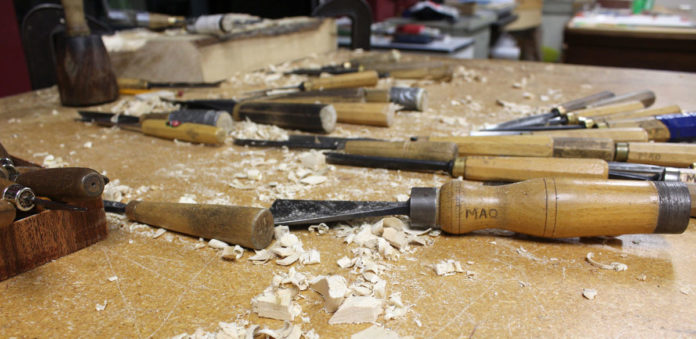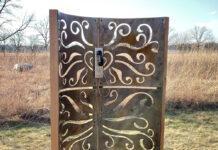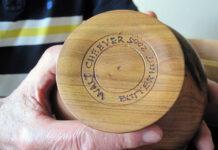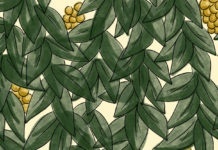Mary Ann Osborne, a member of the School Sisters of Notre Dame for 46 years, believes working with wood is a spiritual practice, a connection to the Holy Spirit himself.
In the multiple years she has devoted herself to the craft, she has learned to follow her inner voice and when she has, she has created pieces which whisper peace and hope. “My job is to create something from stories in life,” Sister Osborne stated with equal conviction, love, and passion.
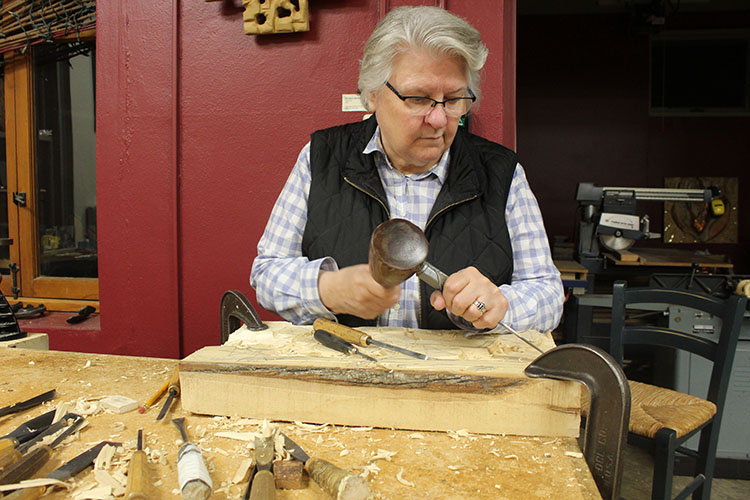
A New Calling
Before Osborne learned the worth of carving life from wood, she taught grade school for 13 years in several different states. In 1975, she acquired a BFA in Elementary Education from Mount Mary University in Milwaukee. Although she enjoyed teaching and her kids, she sensed that it wasn’t what she was supposed to be doing.
It wasn’t until she was 33 when she took woodcarving in Faribault at Ivan Willock Studio for two summers from 1988 and 1989 that she discovered what she calls her work to do. She was still teaching grade school while she pursued her woodcarving apprenticeship. When she turned 35, that apprenticeship became full-time.
My job is to create something from stories in life.
The apprenticeship wasn’t without challenges, though. She felt stifled working within a structured environment with her instructor, Ivan Willock, who was strict about the measurements. Willock had her design clay projects but challenged her to use measurements as the ruling guideline and different tools, many of which she wasn’t comfortable with.
Even though Osborne had questions about only using the techniques she learned at Ivan’s, she also considers it a valuable time. For example, she learned how to smooth her carvings using only tools instead of using any sandpaper.
“It was valuable at that stage of my development of learning,” Osborne said. “Once you know the rules and understand how they work, the challenge for me at this stage of my development is to lose my umbrella of rules. For me, I feel that that is how I now can follow my heart and discover what it is that I am supposed to be doing. But I now have the background and foundation of knowing how to use each of my tools which I learned working at Ivan’s.”
Going Deeper
A year later, while she was studying for her Classical and Modern Sculpture Studies degree, she got the opportunity to study in Europe for two years.
There she felt both challenged and validated at a new stage of her wood carving journey when she met Sister Sigumunda May. Sister May became her mentor during the study time abroad.
Sister Osborne explained Sister May’s regular advice about turning inspiration into tangible creations, “When something strikes you, do it,” her mentor often said.
When asked if woodworking was common among nuns, Sister Osborne laughed and said, “No! It’s not common even among women.” She described a supper she had recently with two male woodcarvers and appreciated how they were all able to share insight about their projects and techniques.
Justice
When you examine the details in her woodcarving, both in people and her usage of symbols, many people report a sense a spiritual wonder and greater meaning than the obvious. But what she most hopes is that her woodwork will tell stories relevant to daily living of ordinary people.
Over the years, Sister Osborne has discovered that her themes usually involve social justice situations. She accomplished her first woodcut piece, One Who Broke through the Darkness, while she was studying in Germany and it became one of her most popular pieces. The idea came as her emotions were stirred when she noticed all the people crying over lit candles at a homeless shelter during Day of the Dead.
“Why are you crying?” Sister Osborne remembered asking.
“We are praying for our brothers and sisters who died in the cardboard boxes,” they answered.
Not everyone appreciated the people that Sister Osborne carved. She often heard the people she carved didn’t look like real people or the way that they thought people should look. “Your people are a part of you and what you make,” Sister May had told Sister Osborne. “Believe in yourself and what you’re doing.”
The Sister’s Work
Sister Osborne has a piece called Wound Sanctifier which was inspired by people who suffer, whether they are martyrs or ordinary people facing challenging hardships. She embedded silver metal in people’s uplifted hands to represent the nails in Jesus’ hands, signifying that is what it means to be a Christ follower. She also clarified that she intends the wounds not to be mistaken for weaknesses but strengths instead since they are the life examples that provide light to others.
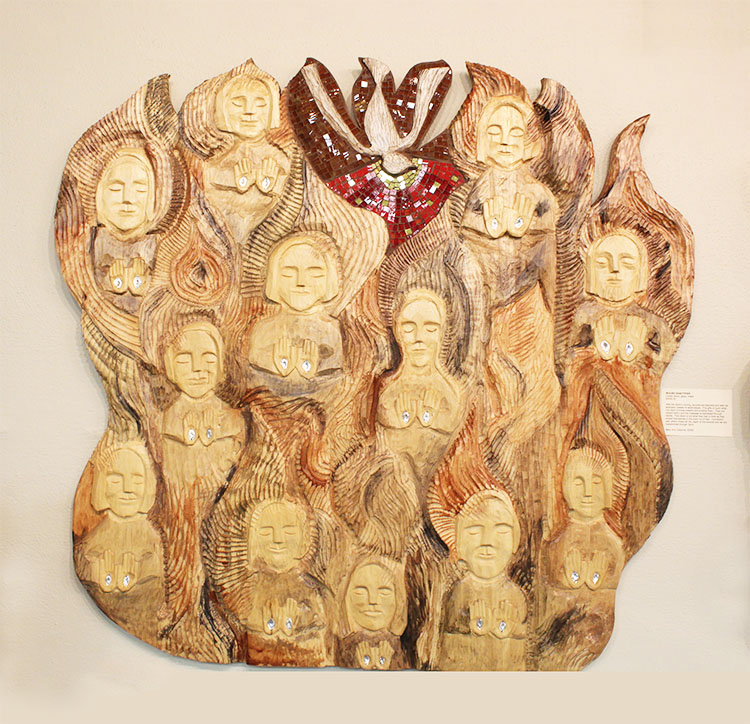
Osborne also created her own Beatitudes Project, a ten-foot piece portraying a fish shape with the eight Beatitudes on one side and a carved figure of a fish on the other side. A dove, symbolizing the Holy Spirit, lingers on the right side of the piece and expresses sorrow for suffering people. She wrote a book as an accompaniment which ended up selling out four printings and was used for confirmation and in Catholic Schools.
“It [the woodcarving] was made for the stage at St. Thomas University for a symposium that Richard Rohr was giving on the Beatitudes,” Sister Osborne recalled. Now, The Beatitudes Project has a home in Eden Prairie at the Pax Christi Parish.
A powerful piece that spoke to the author’s heart is called The Lost One, which includes shattered pieces from a glass dish a friend of hers broke. The friend’s heart broke over the tragedy since she had received it as a gift, so Sister Osborne searched for a creative means to use the glass pieces. After musing, she thought of the parables of the woman with the lost coins and the shepherd seeking the lost sheep.
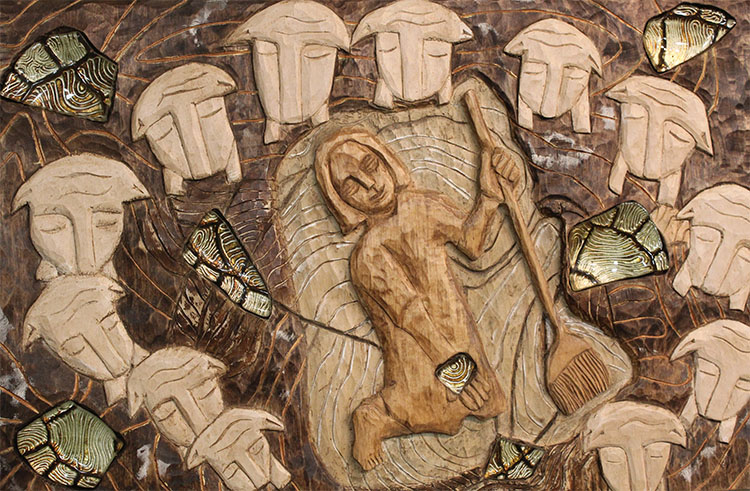
“Both ideas suggest that what at first glance appears to be loss, turns around and enriches our lives beyond what we first envisioned,” Osborne wrote about her artwork. “Sometimes if we let go of our treasures, they reappear in a different form to continue to hold a message that speaks of God’s continued watch over us.”
Lately Sister Osborne has experienced her own suffering after undergoing hip surgery. When she was helpless and needed assistance with simple activities such as tying her shoes, she experienced a deeper understanding about helplessness, not just physical but spiritual. This spilled over to her understanding of her creative process. “It’s not me,” she stated. “I cannot do it on my own.”
Recent Projects
Recently, Osborne has completed a few projects. She has focused on creating crosses with unique adornments for weddings or crucifixes. “I find people are drawn to them,” she said, adding that she tries to create enough for her stock since the crosses fly off her shelves.
Another, titled Orion’s Annunciation, features Gabriel appearing to Mary and foretelling Christ’s birth. The work is a piece of bark that looks thick enough to resemble a book and the story is emerging into real time. Sister Osborne likes the earthiness of the bark which she suggested could also serve as reminder of Christ’s humble beginnings.
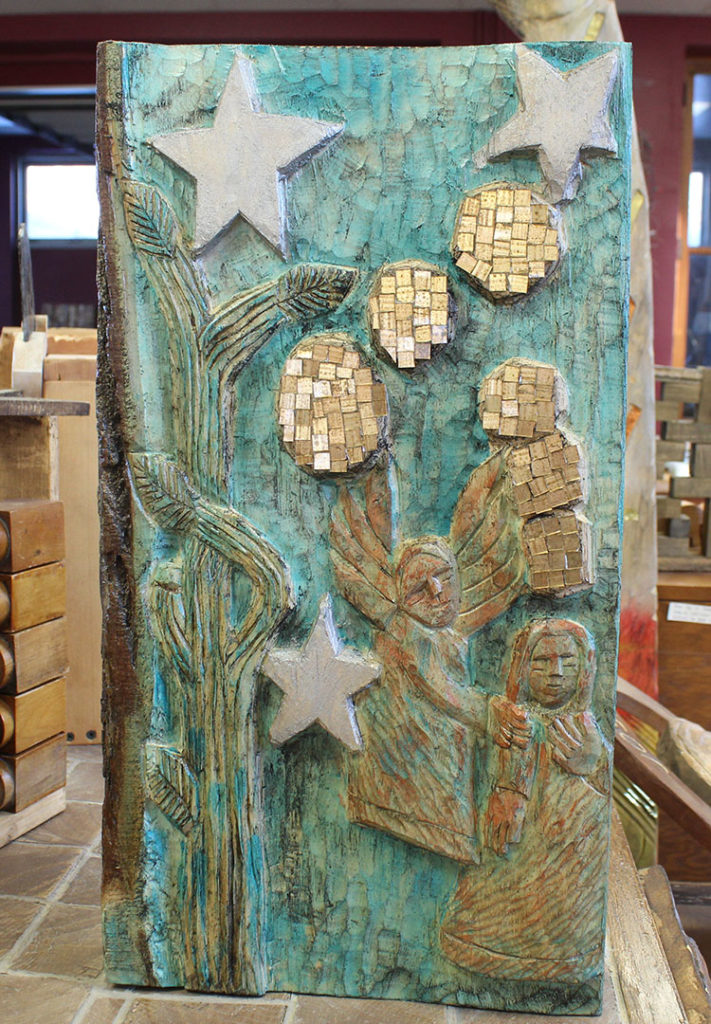
Since the early 2000s, she had been saving gold tiles bought on her last trip to Rome. She felt called to work them and a few other new techniques into this project. They were used to create a mosaic which features the tiles as representation of the constellation Orion. As a little girl, she felt drawn to that particular constellation because she could always point it out when she lived on the family farm. “Later I also found out that Orion can be seen universally,” Osborne added. “It symbolizes light coming into the world.” Another new technique was coloring with ink. Both the angel and Mary have blue ink for their bodies. Osborne intended to show the Holy Spirit entering Mary as she receives the angel’s message.
The Sister said she wants to focus more on Gospel stories.
She received inspiration for a Lent work she calls Lenten and Easter Season. The triptych took quite a bit of work to conquer. It is similar to a literary trilogy except in visual form; there are three interrelated stories that make up the whole. “The theme of the three pieces in the triptych is water and the thirst it causes and the refreshment it brings,” Sister Osborne said. “It is the coming into newness.”
On the first piece, “Give me this water gushing up to eternal life,” from John 4:14 is quoted, and the carving is called The Woman at the Well, which is the gospel of the third week of Lent. The water is meant to convey that people are constantly thirsting for something more satisfying than the life they are living. “On the carving are the words, thirsting for wholeness to signify we are invited to enter into the water and realize the effects it can have on us,” Osborne explained.
“All who are thirsty come to the water.” From Isaiah 55:1from the Easter Vigil readings is the theme of the second panel. The carving for that piece is titled, Miracles Stored Within.
From the Easter Sunday readings, “Baptized in Newness of Life,” Romans 6:4, adorns the final panel. The carving is called Newness. “It emphasizes the bulb contained in the earth that seeks new growth and life, through the cross, blossoms into a beautiful flower,” she said.

